Everglades National Park, Florida
Steven Dutch, Professor Emeritus, Natural and Applied Sciences, Universityof Wisconsin - Green Bay
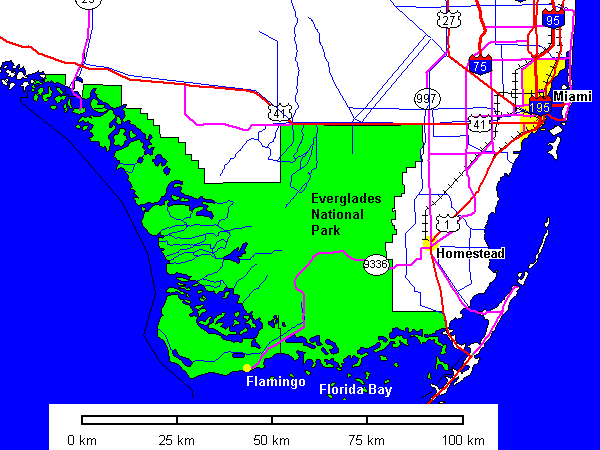
..Where a man can hide, and never be found
and have no fear of the
baying hound.
But he better keep a-moving and don't stand still.
If the
skeeters don't get him then the gators will.
"Everglades," Kingston Trio
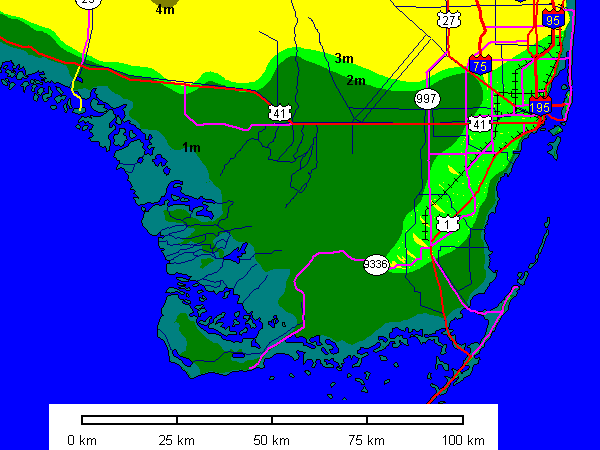
The map above shows the towering mountainous landscape of southern Florida, where elevations in the far northern part of the map reach a dizzying 4 meters above sea level. Better stop to pick up oxygen and a Sherpa guide before heading north.
Think this area might have problems if sea level rises a couple of meters?
Like the Okeefenokee, the Everglades is a wide, shallow, sluggishly flowing river that owes its existence to a low confining ridge. Like the Okeefenokee, the Everglades is clear, clean, and shallow. Unlike the Okeefenokee, the Everglades has limestone just below the surface. The ridge and the park are composed of the Pleistocene Miami Formation. The ridge is called the Miami Oolite Ridge and is composed of oolitic limestone - sand-sized pellets of limestone created by wave action. The developed axis south of Miami and the one highway across the park follow the ridge.
For a state underlain almost entirely by Tertiary and Quaternary marine limestone, and whose highest point is 100 meters above sea level, the 1981 Geologic Map of Florida has the most blinding color palette I've ever seen on a geologic map. Caution! Do not stare directly into the rays of this map without adequate eye protection!
Yee-Haw!
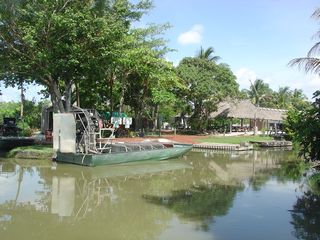 |
An airboat ride from one of the operators adjacent to the park is cornball but too much fun to pass up. |
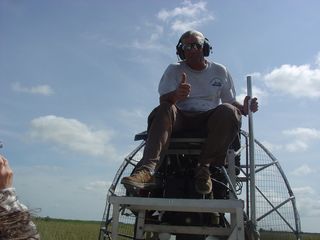 |
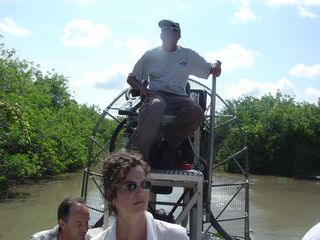 |
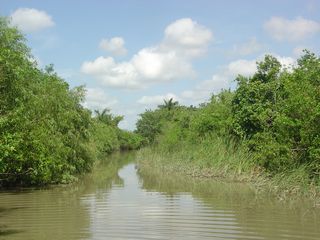 |
|
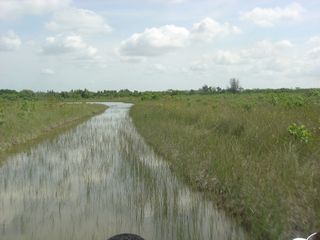 |
An airboat trail. The water is only a couple of feet deep at most. |
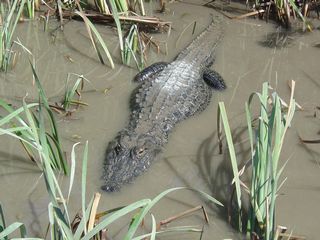 |
Carefully cultivated relationships with the local reptiles guarantee alligator sightings. |
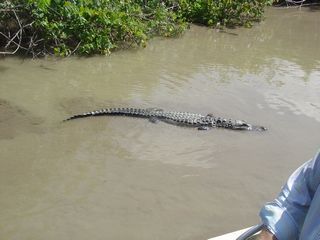 |
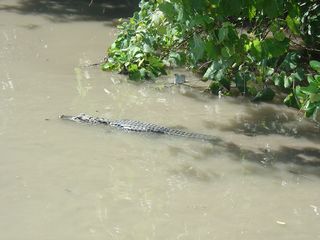 |
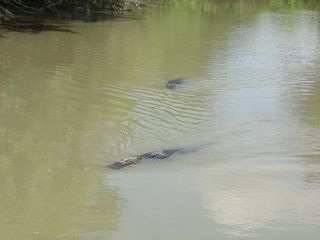 |
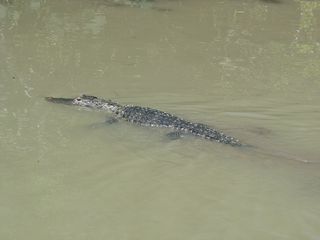 |
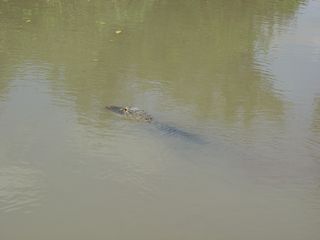 |
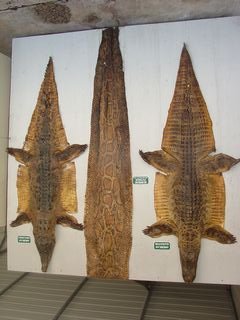 |
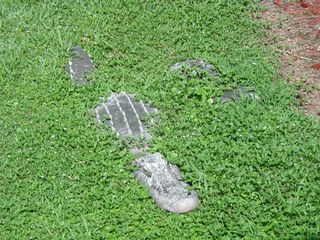 |
No that's not a lawn gator - it's a set of concrete stepping stones. |
The Everglades
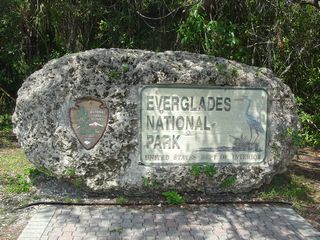 |
The entrance sign is a coral boulder |
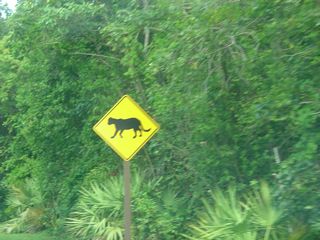 |
Florida panthers are endangered and frequent victims of roadkill. |
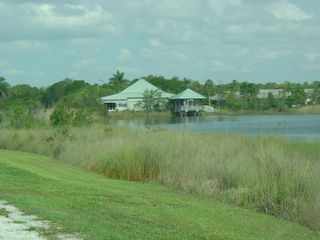 |
The visitor center. |
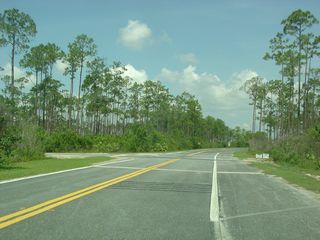 |
Left and below: Slightly higher ground is dominated by open pine forest. |
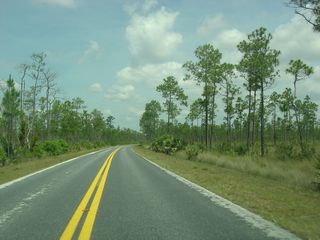 |
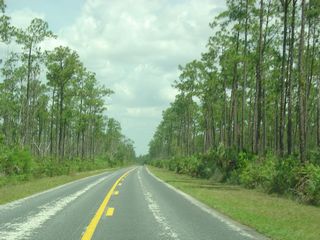 |
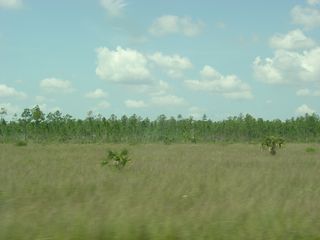 |
Left and below: Low ground is dominated by grass, flooded in the wet season but dry here. |
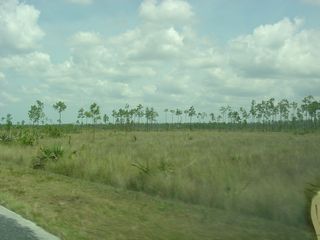 |
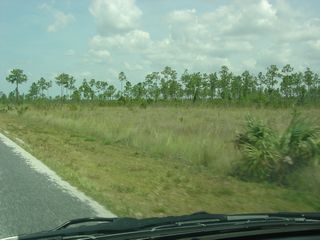 |
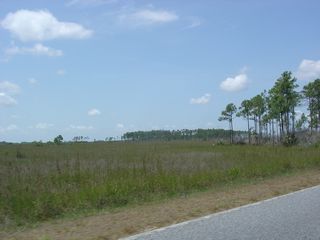 |
Slightly elevated hammocks stand as low islands in the grass. |
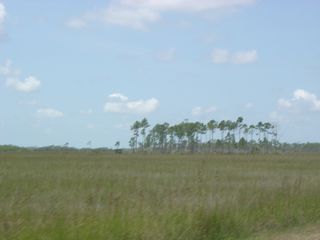 |
Mahogany Hammock
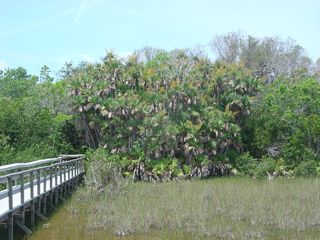 |
A boardwalk leads around one hammock. |
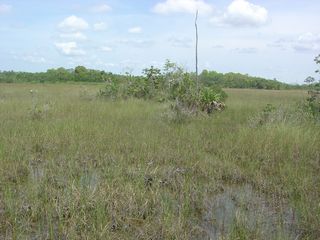 |
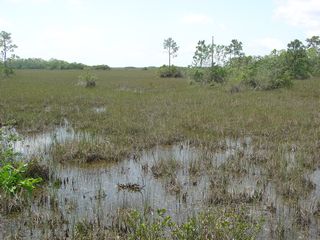 |
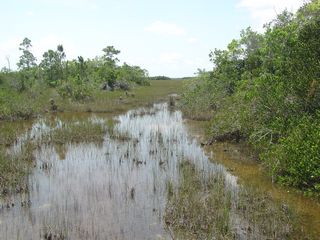 |
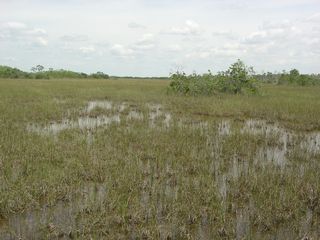 |
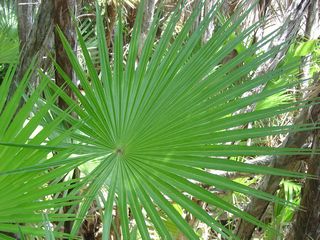 |
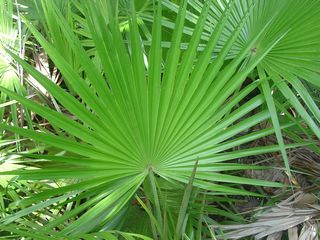 |
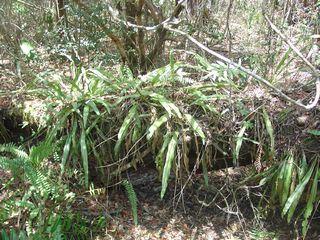 |
Epiphytes are abundant on the trees. They are not parasites but merely grow on the trees. |
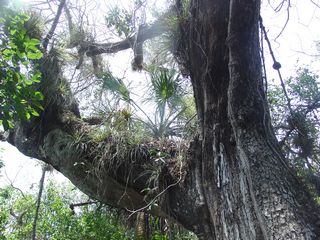 |
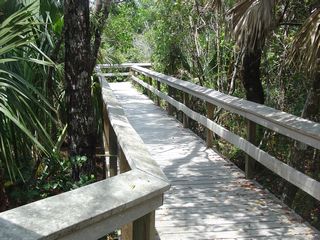 |
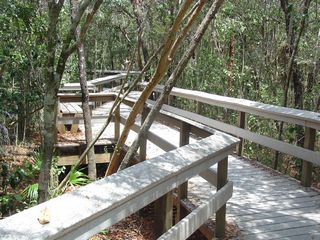 |
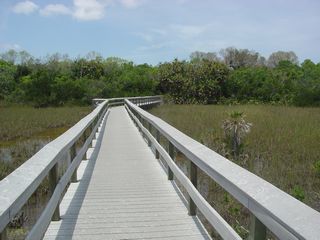 |
Flamingo
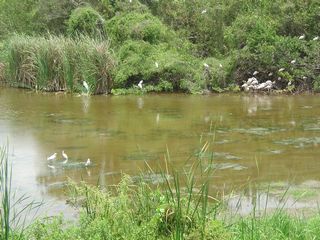 |
Ironically, one of the best places to see bird life is a water treatment pond at Flamingo, at the end of the road. |
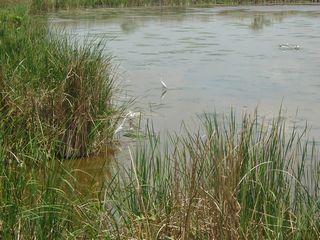 |
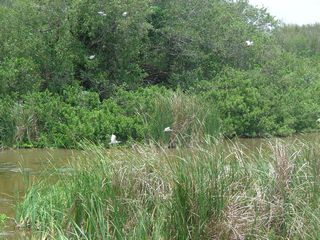 |
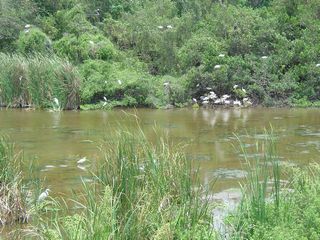 |
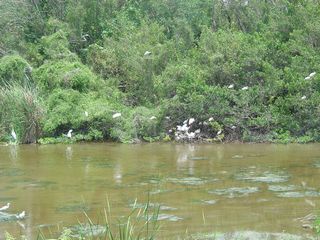 |
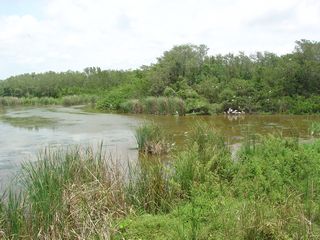 |
|
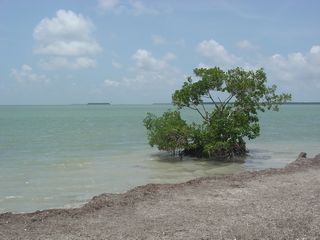 |
Coastal mangrove tree on Florida Bay |
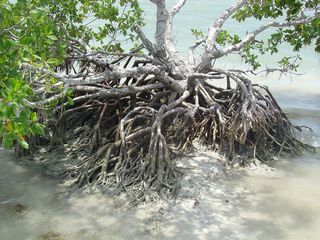 |
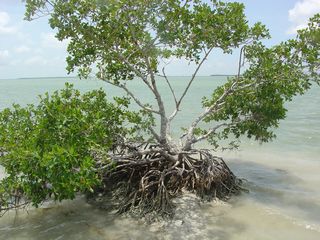 |
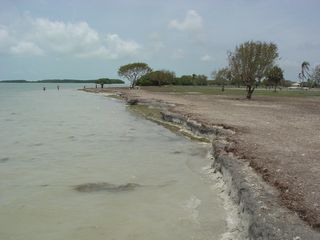 |
The shoreline at Flamingo is underlain by limy marl. |
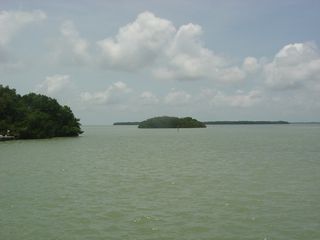 |
Views of Florida Bay |
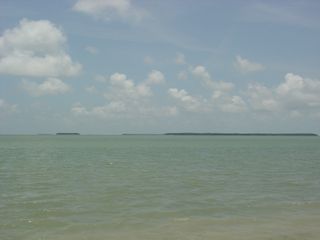 |
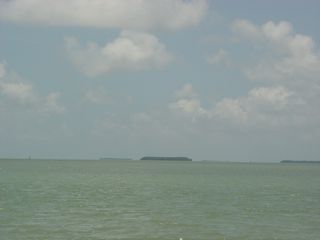 |
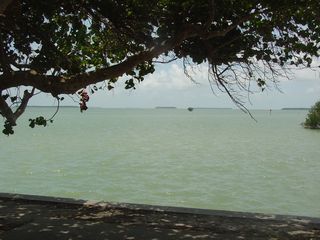 |
|
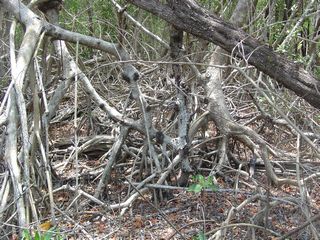 |
Left and below: mangrove roots. Mangroves are potent agents of shoreline stabilization. |
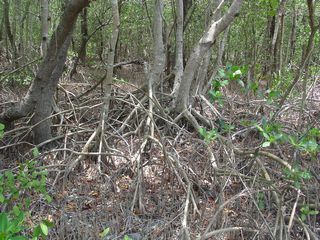 |
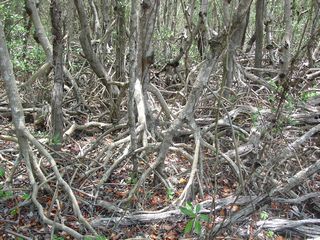 |
Pahayokee Overlook
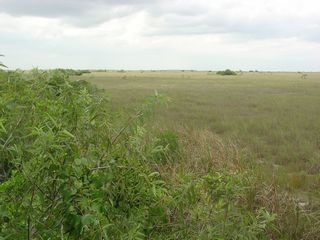 |
A view out over the grasslands. |
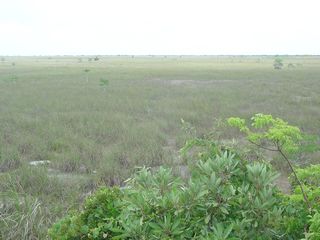 |
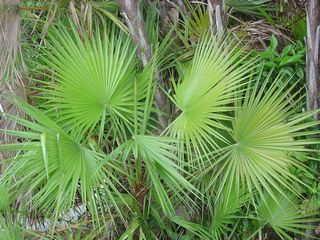 |
 |
Left and below: This was the dry season and areas normally under water were exposed. Limestone is never far below the surface here. |
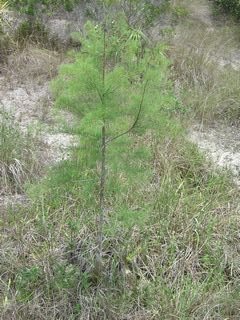 |
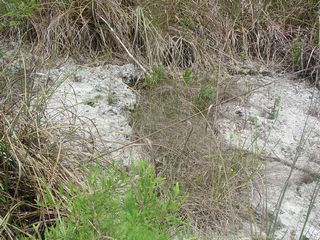 |
Royal Palm
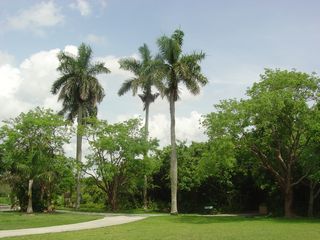 |
One of the first parts of the Everglades to be preserved, just inside the park entrance. A boardwalk complex offers views of birds and aquatic life. |
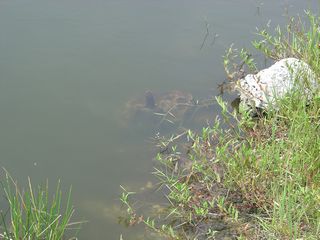 |
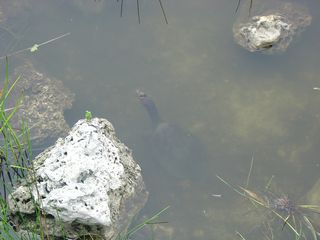 |
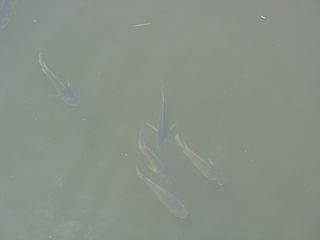 |
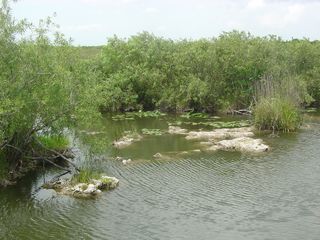 |
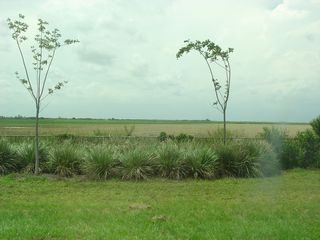 |
The agricultural development just outside the park that competes with the park for water. |
Alligator Alley
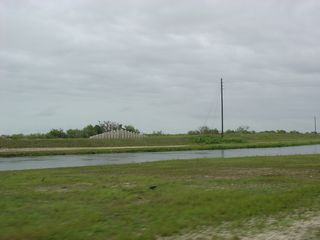 |
U.S. 41 starts out as Calle Ocho in Miami's Little Havana, runs north of the Everglades as Alligator Alley, then snakes northwest, ultimately to pass a few miles from my home in Green Bay, Wisconsin. |
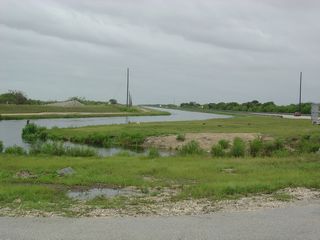 |
Canals along the highway intercept a lot of the water that formerly went into the Everglades. |
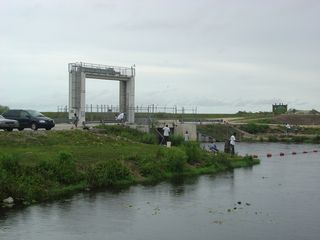 |
A lock and floodgate on one of the canals. |
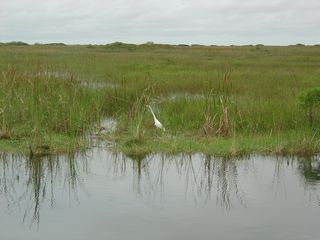 |
Ironically, the scenery outside the park was much more typical of
how most of us imagine the Everglades, partly due to the time of year
(the dry season) but also due to water diversion. Much of this land is protected as Indian reservation or as the Big Cypress National Preserve. |
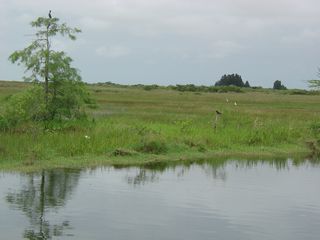 |
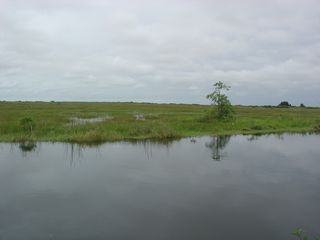 |
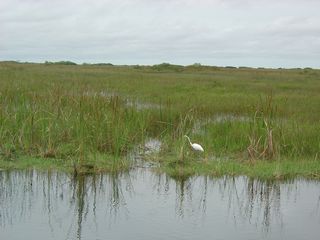 |
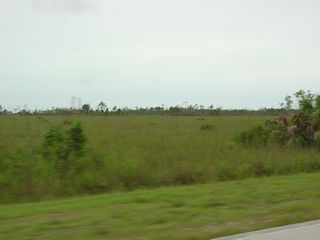 |
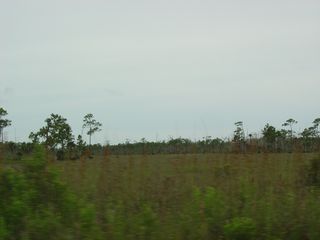 |
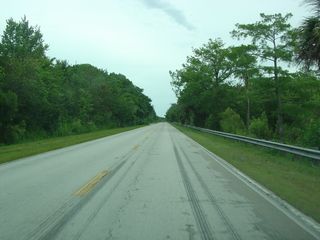 |
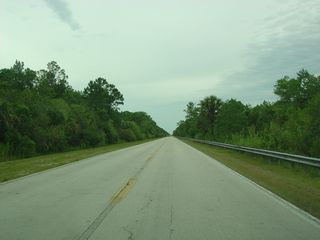 |
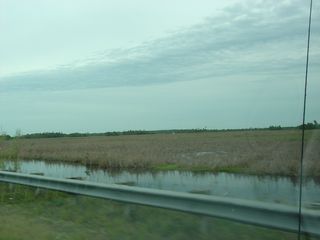 |
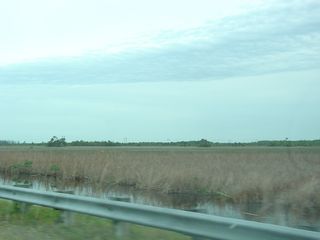 |
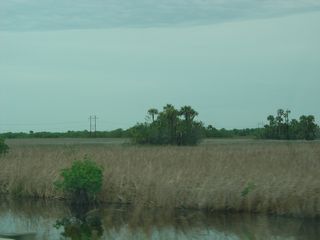 |
Return to Historic Sites Index
Return to Virtual FieldTrips Index
Return to Professor Dutch's Home Page
Created 15 November 2005, Last Update 06 June 2020